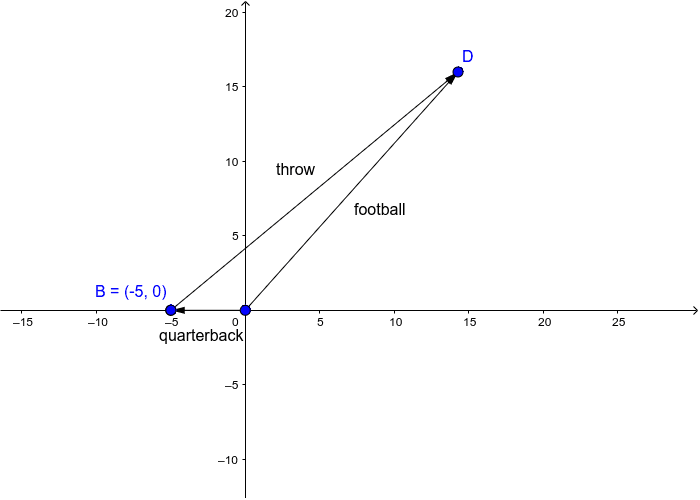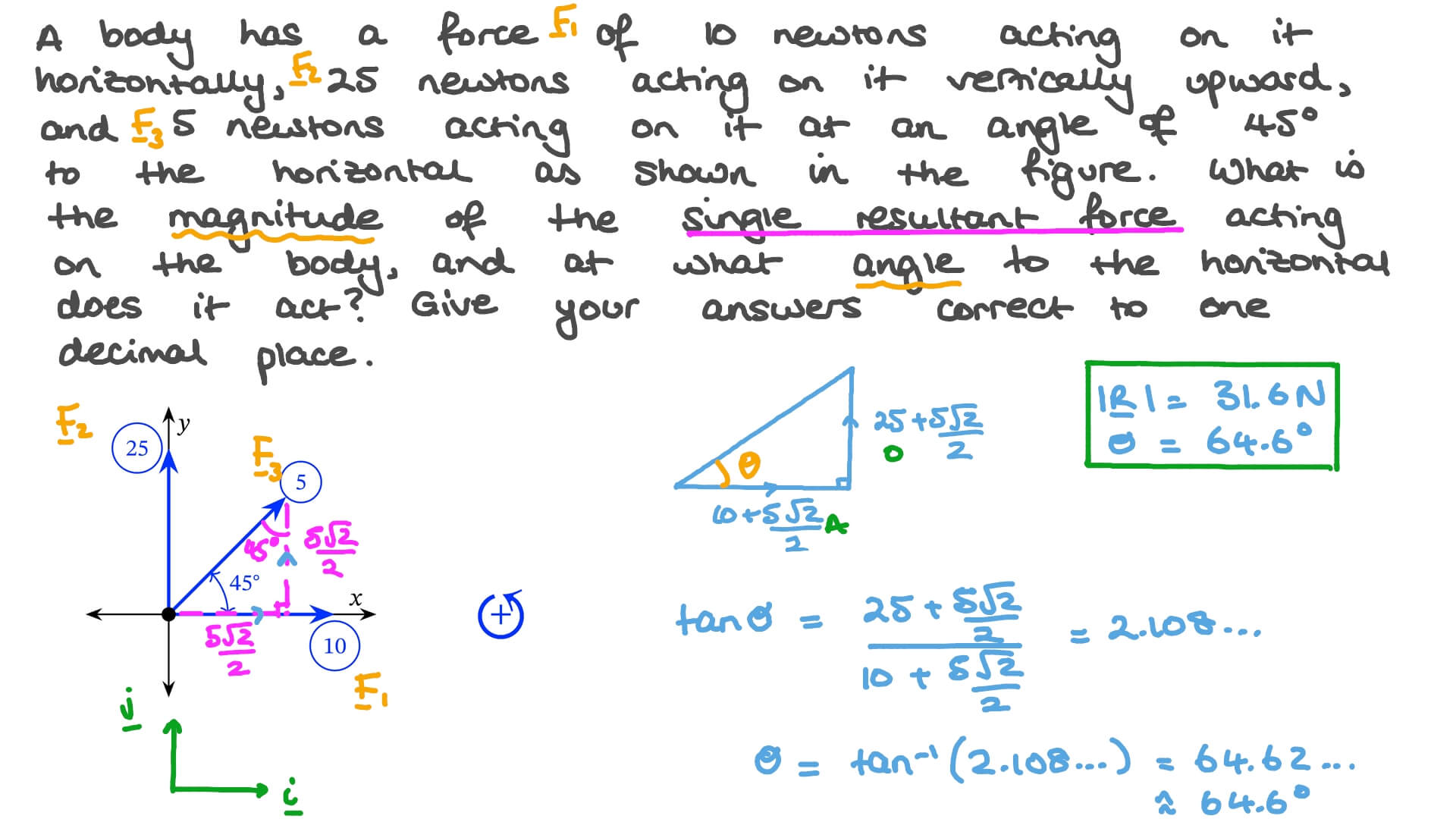How To Find The Resultant Speed
Ground speed can be determined by the vector sum of the aircrafts true airspeed and the current wind speed and direction. Vyj are all of the y-component of velocities.

Resultant Velocity An Overview Sciencedirect Topics
Also know how do you find the ground speed of a plane.

How to find the resultant speed. Finally find the magnitude and direction of the resultant force by using its x and y components. A headwind subtracts from the ground speed while a. For example if an object falls for 3 seconds multiply 3 by 98 meters per second squared which is the acceleration from gravity.
Vm Sum Sqrt Vxi2VYj2 Where Vm is the resultant velocity magnitude. 300 plus 150 minus 2 times 300 times 150 times cosine 70. The head to tail method considers the head of a vector to be the end with the arrow or the pointy end.
People also ask how do you calculate resultant speed. Multiply the acceleration by the time the object is being accelerated. For example if an object falls for 3 seconds multiply 3 by 98 meters per second squared which is the acceleration from gravity.
I make short to-the-point online math tutorials. The resultant force is the vector sum between the components. First you want to find the angle between each initial velocity.
Whether you are test driving your brand new car or just going for a quick jog or cycle if you want to know how to find average speed this calculator will come in handy. Round your answers to the nearest whole number vw2152112-21511cos120 vw2511 vw 2260530911 23 sinB 11sin122260530911 SinB0421417792 B25 13025155. How do you calculate resultant speed.
The resultant force can be determined also for three-dimensional force systems by using the polygon rule. I struggled with math growing up and have been able to use those experiences to help students improve in ma. The following formula is used to calculate a resultant velocity.
Multiply the acceleration by the time the object is being accelerated. If two or more velocity vectors are added then the result is a resultant velocity. Calculate the x and y.
Va Tan-1 VxVy Where Va is the angle of the resultant velocity. For example if 4 forces act on a block and cause it to accelerate 1 ms 2 south then the resultant force is the force that if applied alone to. In the article below you can find a lot of valuable information.
This speed calculator is a tool that helps you determine the average speed of a moving object based on the distance traveled over a certain time traveled. By analogy you ask what is a resultant. The head to tail method is way to find the resultant vector.
The resultant velocity in this case is 294 meters per second. So the magnitude of f plus g squared which is 300 plus 150 minus twice the product 2 times 300 times 150 times the cosine of the angle between them. If there are several forces acting on the same point we can apply the polygon rule to find their resultant.
When an object is subject to several forces the resultant force is the force that alone produces the same acceleration as all those forces. How Do I Calculate Resultant Velocity. So let me calculate that on my calculator.
Find the magnitude and angle for each velocity given. The tail of the vector is where the vector begins. Find the resulting speed and direction of the barge.
The x component of a vector is parallel to the. You need to combine his backward run vector with his throwing vector to get the components of the resultant vector. The resultant velocity in this case is 294 meters per second.
Vxi are all of the x-component of velocities. The resultant is the vector sum of two or more vectors. The steps are quite straight forward.
It is the result of adding two or more vectors together. I get 81718 approximately. Calculate the x and y components of the individual velocity vectors.

Resultant Velocity An Overview Sciencedirect Topics

Vector Diagram Resultant Velocity Concept Youtube
Physics Magnitude Of Resultant Vectors

How To Find The Resultant Of Two Vectors Youtube

Resultant Speed Direction Two Forces Geogebra

Equation Of Motion 1 Acceleration Is The Change In Velocity Per Unit Time From Standard Grade Ppt Download

Resultant Velocity An Overview Sciencedirect Topics

Calculating Resultant Forces Vector Diagrams Graphs Work Done Calculations Equilibrium Parallelogram Of Forces Tension Vector Forces Gcse 9 1 Physics Igcse Revision Notes

Determine Resultant Of Two Vectors Using Pythagorean Theorem Solved Problems In Basic Physics

Question Video Finding The Magnitude And Direction Of The Resultant Force Of Three Forces Acting On A Body Nagwa
Physics Magnitude Of Resultant Vectors

How To Calculate The Resultant Force Acting On An Object X Engineer Org






Post a Comment for "How To Find The Resultant Speed"